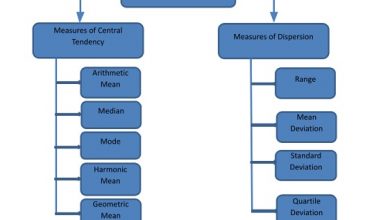Observational study definition characteristics techniques
Observational study
An observational study is a type of qualitative research in which a scientist studies the behaviors, customs, or reactions of a subject or group of them in a systematic way. The observations made during the study are analyzed later, with the aim of drawing conclusions about the research participants.In this article we will provide you the information of observational study.
Examples of observational studies are a researcher who observes the behavior of platypuses, a scientist who observes the relationships of an Amazon tribe, or a sociologist who observes how children behave in a certain school context.
Observational studies are part of a type of research known as “non-experimental.” This is because the researcher cannot manipulate any variable or control the results or conditions. Therefore, through them it is not possible to draw any firm conclusions about the causality or the effects of the observed phenomenon.
Observational research can be used in all kinds of fields, from those related to biology and ethology as well as those closest to the social sciences. Thus, it is common to find studies of this type in disciplines such as anthropology, zoology, psychology or sociology.
Despite the fact that the basic idea behind an observational study is always the same, there are different ways to carry out an investigation of this type. In this article we will see what its main characteristics are and the most common methods by which it is put into practice.
Observational study characteristics
– Behaviors are observed in a natural environment
Among all the research methods that exist, the observational study is the most indicated to check how a subject or a group of them behaves within their own environment.
While in other types of research the scientist is in charge of manipulating the conditions of what happens, or intervenes in some way in how the situation develops, in pure observation he simply limits himself to studying what happens with different levels of participation according to the case.
– The participation of the researcher varies
As we have already mentioned, in an observational study the participation of the researcher may vary depending on different parameters such as the objectives of the study, the conditions, or even the field in which it is being carried out.
On many occasions, the researcher will limit himself to studying what is happening from the outside; and in the most extreme cases, participants will not even know that they are being watched. This occurs, for example, in ethological studies in which a person wants to better understand the habits and customs of some animal species.
In other cases, however, the researcher may enter the situation to a greater or lesser extent, in order to collect more data and better understand what is happening.
An example of this would be the observation that is carried out in certain anthropological contexts, where the scientist lives with an indigenous population to understand their way of acting.
– More reliable data is collected
One of the main problems with some types of quantitative research , such as surveys or interviews, is that the results are based exclusively on what the participants answer. Due to the nature of these research methods, the answers may not be very reliable.
In an observational study, on the contrary, the conclusions drawn about the behaviors of the subjects are completely reliable as long as the method has been carried out correctly. For this reason, in certain contexts it is much more advisable to use this type of research method.
Techniques and Instruments
Within observation, we find basically three techniques: controlled observation, naturalistic observation, and participant observation. Next we will see what each one of them consists of.
– Controlled observation
The first version of this research method involves structured observation that occurs in an investigator-controlled environment, such as a laboratory. The researcher controls some of the variables, such as the location, the participants, or the circumstances surrounding the study.
However, even if the researcher intervenes to some extent, during the study itself, the researcher will limit himself to observing the way in which the participants behave. Generally, the behaviors seen will be classified by means of a code created beforehand, with the aim of later studying what has happened.
– Naturalistic observation
Naturalistic observation occurs when the researcher does not intervene at all in the situation he wants to study. On the contrary, he is limited to seeing it from the outside, trying to understand what happens naturally. This technique is used mainly in contexts such as ethology, but it can also occur in other natural and social sciences.
During a naturalistic observation, codes are not normally used to classify behaviors, but everything that occurs is recorded in a complete way. Later, the researcher will have to reformulate the data obtained in order to better understand what has happened.
– Participant observation
This last type of observation differs from the others in that the researcher will directly enter the situation he wants to study, with the aim of better understanding it from within.
Thus, for example, an anthropologist could live with a tribe they want to understand better, carrying out all their daily routines.
Examples of observational studies
– Chimpanzees by Jane Goodall
One of the most famous ethologists in history is Jane Goodall, a researcher who wanted to understand the customs and behavior of chimpanzees. To do this, he lived with a tribe of these animals for many years, studying their behavior and becoming one of the herd.
These studies are a clear example of naturalistic and participant observation, since Goodall never manipulated the conditions in which he observed monkeys. On the contrary, he limited himself to studying them and participating in what they did.
– Election polls
A good example of controlled observation is the case of electoral polls, in which a public or private company talks to a large number of citizens to understand their intention to vote and make predictions about the results of the elections.
This would be an example of controlled observation, since although behaviors are not studied in their natural environment, researchers are limited to observing behaviors without intention to manipulate them in any way.
– Study of user behavior on the Internet
Marketing and advertising are two of the areas that most lend themselves to pure observation, since it is not easy to manipulate variables to study user behavior based on different parameters.
Thus, marketing experts observe factors such as visits made by different websites, user preferences, purchases made through the network and other similar elements to determine what the current trends are and to be able to modify their advertising campaigns.


